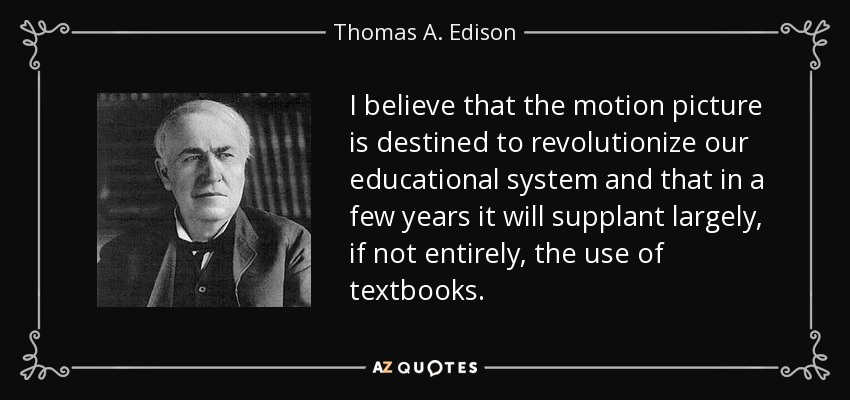What factors contribute to a designer’s decisions to incorporate technology in their learning environment? In classrooms where enrolment can exceed 100+ learners, quite often any tool that can increase efficiency in material distribution, assessment, and management are highly prized.
But what about in our current situation where every instructor has had to pivot to a remote learning environment? How are the platforms assessed expeditiously for their merits? When the spread of COVID19 meant that face-to-face learning paused, the most pressing concerns were around user interfaces and ease of access. What tools were available that could be broadly implemented with the least disruption possible? Many existing platforms expanded use, and other corporations moved to enterprise editions in order to offer more security and client protections.
Take a few moments to watch this video of an early educational technology, and as you watch, complete the activity below the video.
What’s going on here?
Educational technology is not new. BF Skinner was singing the praises of his teaching machine in the mid 1950s, and his ideas were not new either. Thomas Edison was doing the same in the early 1900s.
What is interesting about both of these examples is that they were both completely wrong. We don’t see Skinner’s teaching machines in classrooms, and motion pictures have certainly not revolutionized education or supplanted textbooks entirely or even partially. Right?
Or maybe we do. Did you realize that the ‘fill-in-the-blanks’ activity that you completed (maybe, thanks for indulging me) was exactly the same as Skinner’s teaching machine? Sure, it looks nicer, has an easier interface, and is much more portable. But it is the exact same activity. Students fill in a missing word or phrase, then do something to get feedback from the machine.
Unfortunately, that leads us to the question of how technology is influencing education today. I would argue that the only difference between Skinner’s machine and many modern educational technologies is the scale at which modern technologies can be deployed. If we thought that maybe Skinner’s machine wasn’t doing a good job of actually educating learners, why would we think that putting it into a slick web interface will make it any more effective?
Please read through Chapter 7 of Teaching in a Digital Age. Consider using Hypothes.is to share your thinking and annotations with the class.



Leave a Reply